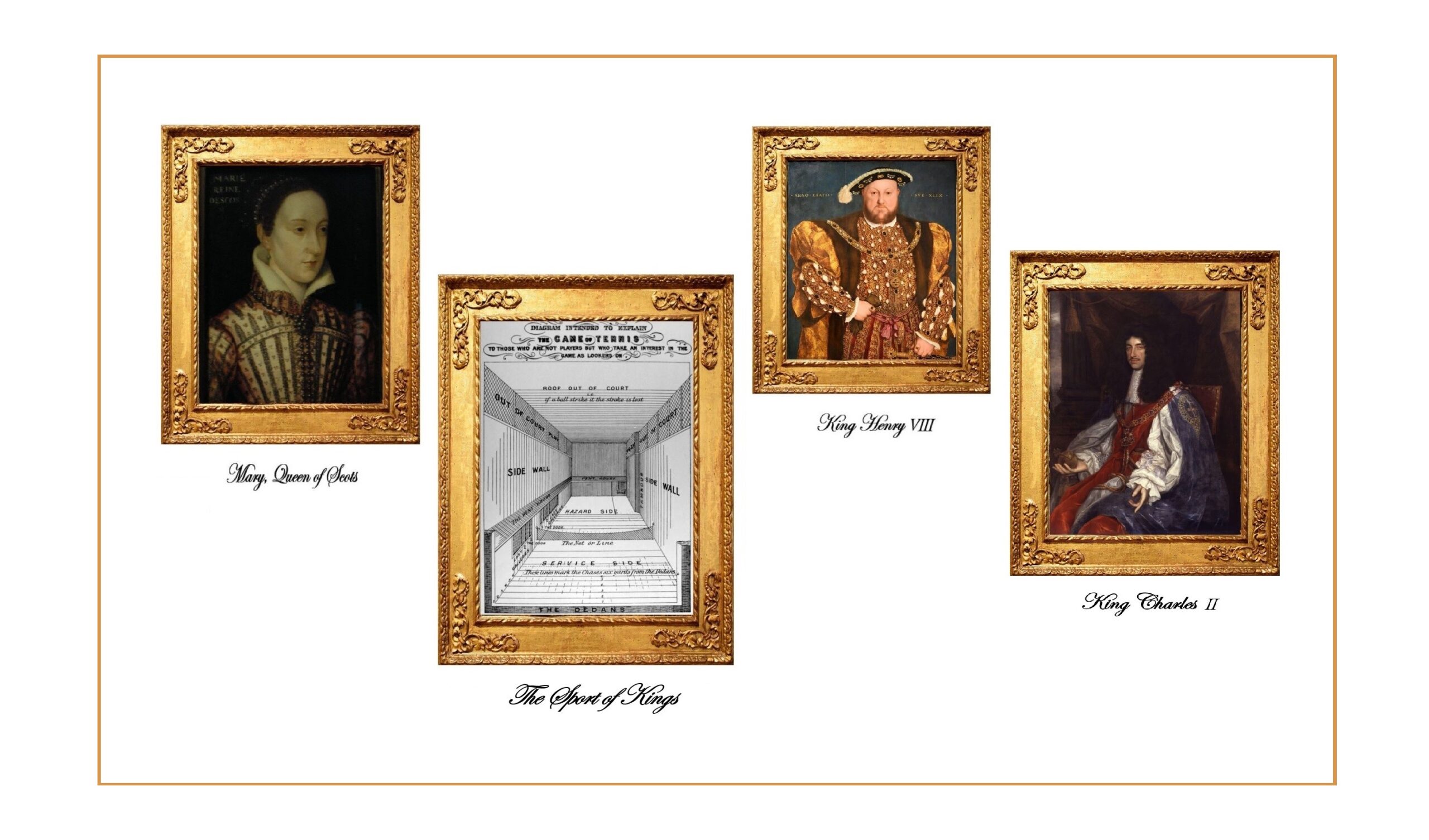
A genuine ‘sport of kings’, real tennis was known as ‘royal tennis’ or just ‘tennis’ to its friends until the early 20th century, when an upstart version played outdoors (outrageous) on grass (of all things) became popular. The heyday of real tennis was in the 16th and 17th centuries, and the sport hasn’t left much of a mark on London. Here, I seek its physical history, and what there is of a physical present.
So what is Real Tennis?
I’ll try to keep this short. It fits somewhere between lawn tennis and squash. The scoring system (love / 15 / 30 / 40 / advantage) is similar to lawn tennis, and the net in the middle is also familiar. However, after that we enter very strange territory indeed. It is played on an indoor court like squash, but with irregularly-sized walls, pear-shaped lopsided racquets and hard cloth balls. Service is from one end only, and it is possible for one player to keep serve for an entire match. There are ‘penthouses’ with sloping roofs in the play area, and players are encouraged to score points by hitting the ball at windows called the ‘dedans’, ‘grille’ & ‘winning gallery’. There are two versions of the game: The older, jeu quarré, has a slightly simpler court, while jeu à dedans has a sticky-out bit at the hazard (receiving) end, called a tambour.
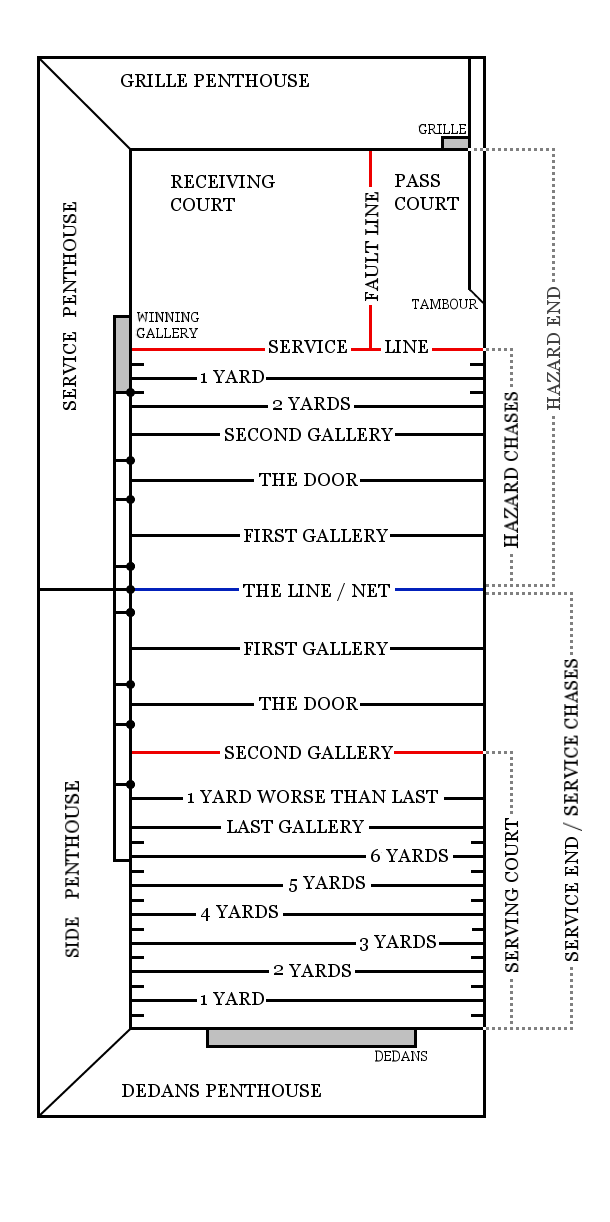
← The court is, er, very easy to understand despite being a tad asymmetric about both axes.
The game is French, and evolved from the handball game jeu de paume; the name ‘tennis’ is based on ‘tenez’, the call made by server to receiver. It is not directly related to fives, which begat racquets, which begat squash – none of these are played on a real tennis court, unlike the almost unknown long fives, which is similar to real tennis but doesn’t have a ‘chase’.
Did I not mention the chase? This is almost a game within a game, and if a chase has been ‘laid’ it is usually played at game-point. However, the rules are too complex for this post; suffice to say this strange concept explains those yard markers on court, and the headache I currently have.
Where in London were tennis courts located?
There have been around 50 real tennis courts in London; here are some of the most important from the sport’s heyday:
As befits a vast royal palace, Whitehall had four courts in the early 17th century, with confusing names and contrasting fates: The Little Close [roofed] Court, on the north of the site, suffered an early form of barn conversion when it became apartments for Princess Elizabeth, James I’s sister, in 1604. The Little Open Court was close to the Tilt Yard, which is now Horse Guards Parade. It had vanished without trace or explanation by 1627. The Chief Close Court, to the west, was converted into a des. res. for the 14-year-old, recently married Duke of Monmouth in 1663. The Brake, or Great Open Court, near where Downing Street now stands, was also used for balloon ball – an ancestor of volleyball. The Brake became gardens during the interregnum; but with the restoration of the tennis-obsessed Stuarts, a new indoor court was built there in 1662.
Heading east from Whitehall, Gibbon’s Tennis Court was built in 1634 on Vere Street, close to Lincoln’s Inn Fields. In further good news for the area’s tennis enthusiasts, Lisle’s opened in 1657 just a stone’s throw from Gibbon’s. The timing is remarkable – a building housing ‘royal’ tennis opening during Cromwell’s rule, just as the Brake at Whitehall was disappearing under Roundhead shrubs and perennials.

← As befits ‘royal tennis’, many courts were in the wealthy West End.
The Royal Tennis Court stood in what became a sporting neighbourhood on James Street (now Orange Street), off Haymarket close to another royal Palace, St. James’s. Built solidly in brick with a tiled roof c.1634 even before James Street had been laid out, it survived Cromwell and was a firm favourite of Charles II. It even became the headquarters of tennis in England for a time.
Why did the sport decline?
Real Tennis was above all a royal game, played in the highest echelons of society in European kingdoms and principalities. The first blow came with the rise of puritanism. Such a game, particularly given the spectators’ habit of gambling on the outcome, roused the ire of the killjoys. Then, a catastrophic coincidence regarding the physical dimensions of the courts produced a further blow, first in Paris and then London: They were about the same size as covered theatres and became easy targets for cheap conversion. Then finally came the French revolution and the rise of Napoleon, which drastically reduced the number of European kings, princes and nobles with their heads attached to their bodies and their bank accounts intact – in other words, those most able to play the game.
A revival in 19th century England, producing many of the courts surviving today, was a false dawn. It led to the creation of the upstart offspring – easier to understand and cheaper to play. Tennis for the masses had arrived, and it was played on grass. One man who initially did well out of the revival was one Joseph Bickley (1835-1923), a builder by trade, who made a name for himself building real tennis courts and in particular by inventing a new kind of patented ‘non-sweat’ floor rendering that could withstand the testing conditions found in such buildings. It was used in many of the London venues in existence at the time.
So what survives of those London tennis courts today?
Not much if I’m honest.
As Charles II returned to claim his throne, there emerged a strong demand for theatre without the supply of buildings to house it – the puritans having demolished most of them. Although the wrecks of two surviving playhouses, the Salisbury Court in the City and the Red Bull in Clerkenwell, were hastily patched up, the restoration theatre companies soon focused on converting tennis courts. There followed a game of thespian musical chairs. The King’s company used Gibbon’s 1660-63, calling it the Vere Street Theatre, before moving to a new build in Drury Lane, while the Duke of York’s company adapted Lisle’s, just 4 years old, opening it as the Lincolns Inn Fields Theatre in 1661. They moved to the deluxe Dorset Garden Theatre near Blackfriars a decade later. In 1672 Drury Lane burned down, and the King’s company temporarily occupied the empty Lisle’s for a couple of years. Lisle’s was then converted back into a tennis court, but celebrations among tennis players were short-lived. The actor Thomas Betterton reconverted it into a theatre in 1695, named it the New, and stayed until 1704, when it was abandoned once more. It was demolished soon after to make way for yet another theatre.
Curiously, Gibbon’s had been the scene of an illegal theatrical production during Cromwell’s rule – while it was still a tennis court. In 1653, an underground production of Thomas Killigrew’s Claricilla was staged, but the authorities were tipped off by an informer – probably a jealous actor – and the performance raided. It is also ironic that in a building designed for an exclusively male sporting pursuit, the King’s company introduced female actors to London for the first time. After the actors had gone, Gibbon’s became a carpenter’s shop, and later a slaughter and tripe-boiling house – how the mighty are fallen – before its final destruction by fire in 1809. The modern Peacock Theatre marks the approximate location.
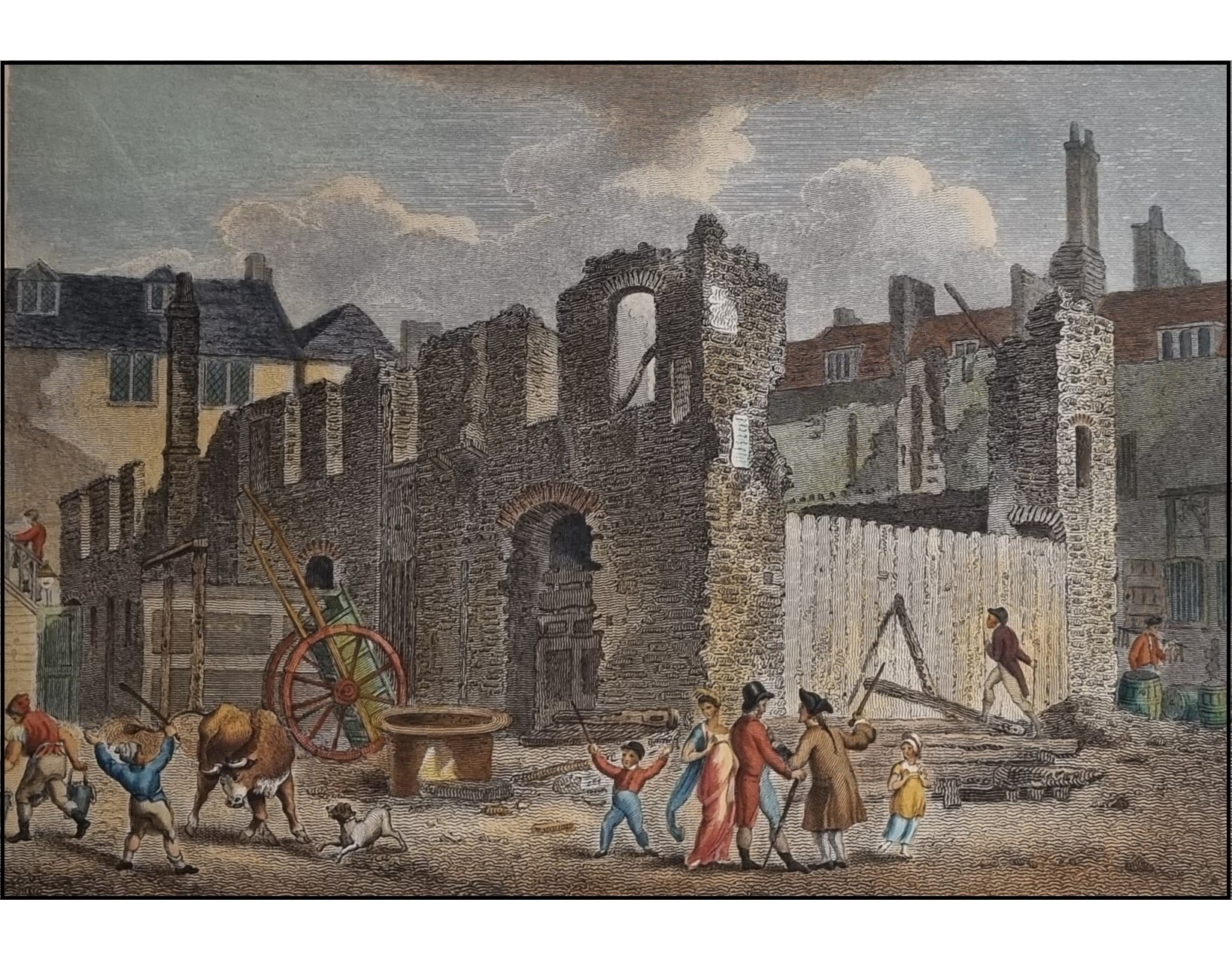
← The end of Gibbon’s Tennis Court. Well, probably. There is a suspicion in some academic circles that this 1811 print employs an excessive degree of artistic licence, even by the standards of the time.
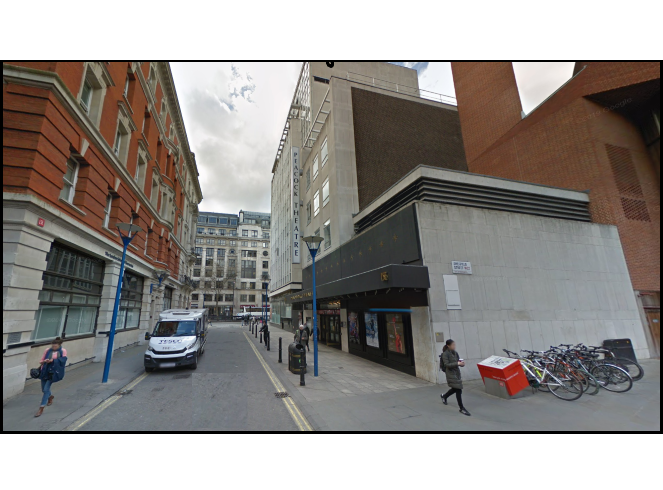
← The approximate site today. Its theatrical connections continue.
The Royal Tennis Court in James Street also led a rather eventful life. In 1735, long after the clamour for converting tennis courts into theatres had subsided, it was … converted into a theatre, at least for occasional use. It reverted to the day job towards the end of the 18th century, in time to become the English Tennis HQ from 1800. During these years it was frequently the host venue of exhibition matches attended by the great and the good, often including the talented Mr Cox, the proprietor, as a player. It closed permanently as a sporting venue in October 1866, and subsequently became a warehouse – first for military clothing and then from 1911 for books. The 300-year-old structure was finally demolished between the wars. An inscription stone placed on the exterior, commemorating the naming of James Street in 1673, survives. It has been placed high up on the wall of the current building, a dreary modern yellow-brick hotel and office block.
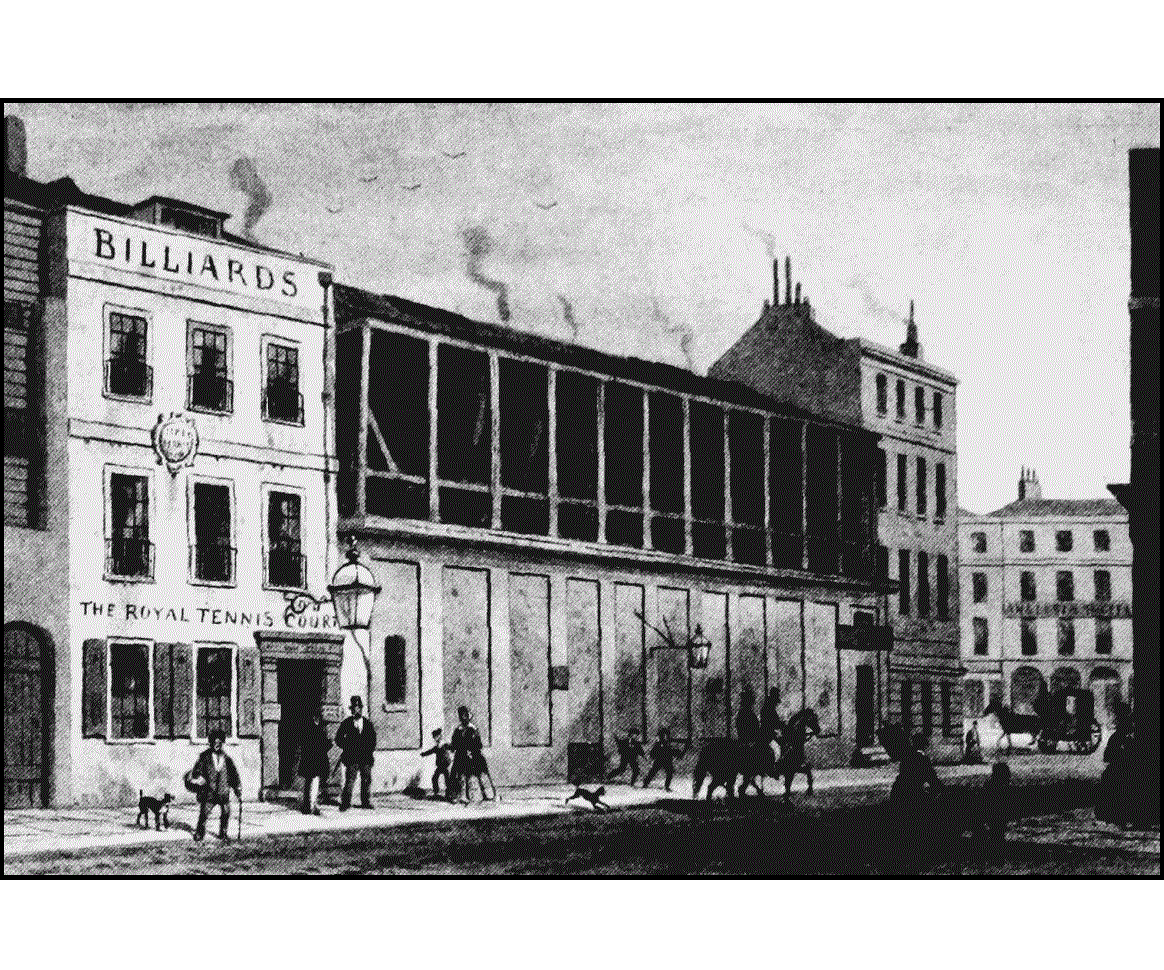
← The Royal Tennis Court, James Street in its final years as a sporting venue. The plaque, now relocated, can be seen to the left between the 1st and 2nd floors. The court itself is the long building, centre.
→The uninspiring view in 2021. The commemorative plaque is just visible in the centre of the brick building. The curious pavement alignment is a leftover from early Victorian times.
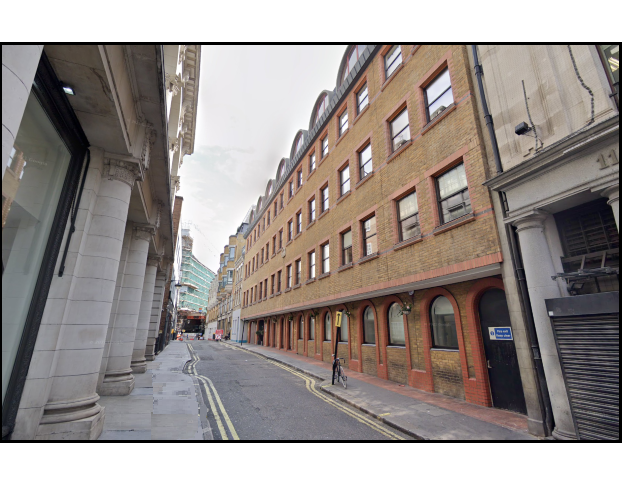
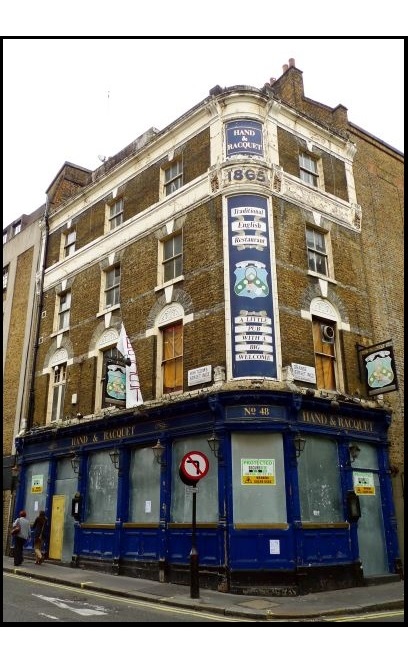
←The Hand and Racquet, the name inspired by the James Street court, was a pub just 60 metres away in Whitcomb Street. Open by 1805 and rebuilt in 1865, it closed in 2008 and fell to the wreckers ball in 2015 along with the nearby Odeon Leicester Square. All this history was lost to make way for another swish new hotel.
The 1662 court at Whitehall survived the ‘dash to theatre’, probably because the palace already had one. This was the Cockpit-in-Court, designed by Inigo Jones within the shell of a cock-fighting arena and the location of the first ever performance of The Tempest in 1611; there was no need to deprive royal tennis enthusiasts of their venue once cock-fighting enthusiasts had been deprived of theirs. Remarkably, the 1662 court also survived the disastrous fire that consumed most of Whitehall Palace, including the Cockpit, in 1698. It was finally demolished in 1809 and its remains – a passage wall – were incorporated into the treasury building, now the Cabinet Office, at 70 Whitehall. The wall survives to this day but isn’t visible to the public.
As might be expected of someone specialising in buildings for a niche sport sliding in popularity with the advent of lawn tennis, Joseph Bickley faced bankruptcy proceedings in his old age. However, his former home displays another reminder of the ‘Sport of Kings’: a royal crest perhaps representing King Edward VII. His father Prince Albert still has a locker at the Hampton Court Palace real tennis court labelled with his name despite being dead for 150 years. Father and son were both supporters of the game.
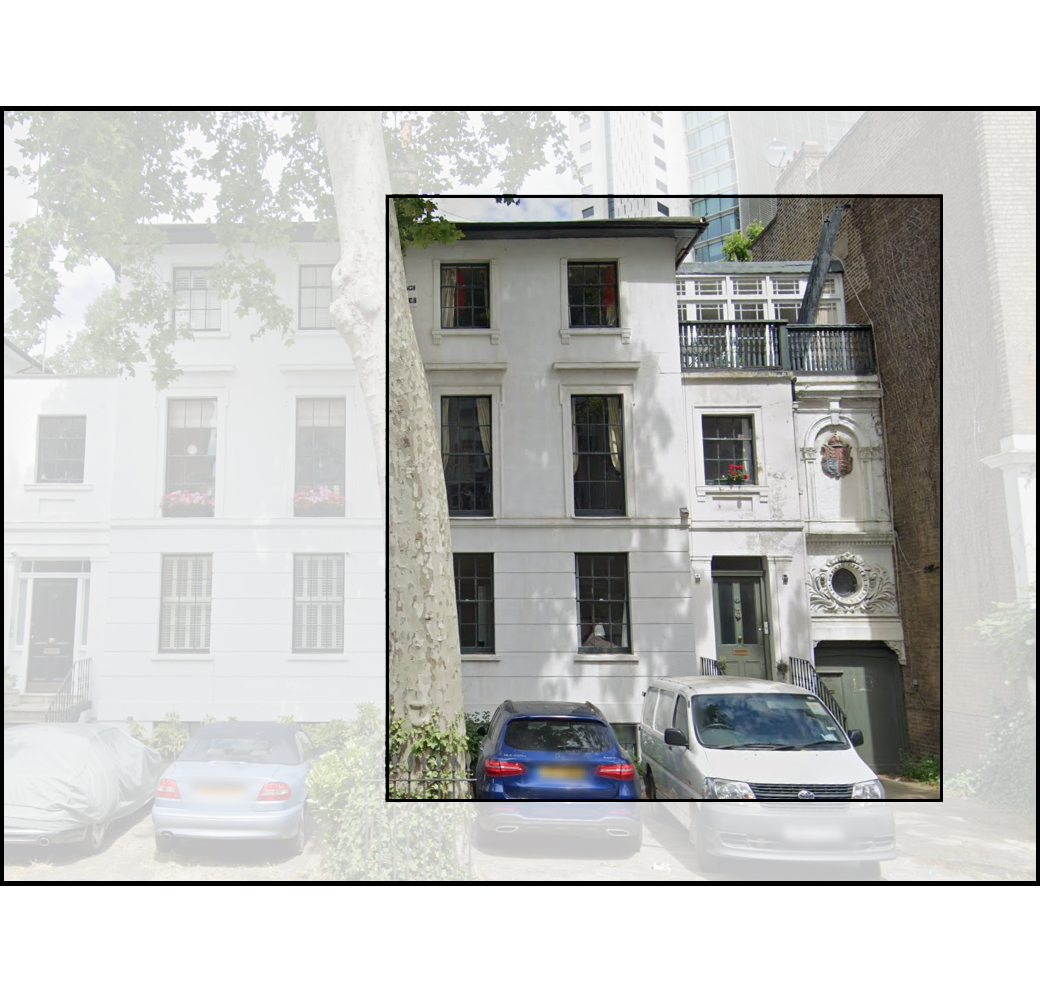
← Bickley’s residence (1889-1919) at 62 Lillie Road, West Brompton SW6 is typical of a builder’s home in that it has some rather ostentatious conceits – a bizarrely ornate oeil-de-boeuf window and the royal crest above.
Can I play real tennis in London today?
Although the sport has been blessed with seven new courts in the UK since 1990, they are still as rare as hens teeth in the capital. Queen’s Club, West Kensington has two and is also the headquarters of the (Real) Tennis and Racquets Association, successor to the Royal Tennis Court in James Street. In a pleasing coming together of the two most confusing sports in the world, the MCC at Lords Cricket Ground also has a court, dating from 1900. The newest, opened in 1999, is at Middlesex University in Hendon. These are all jeu à dedans venues – four courts for a metropolis of 8 million people.
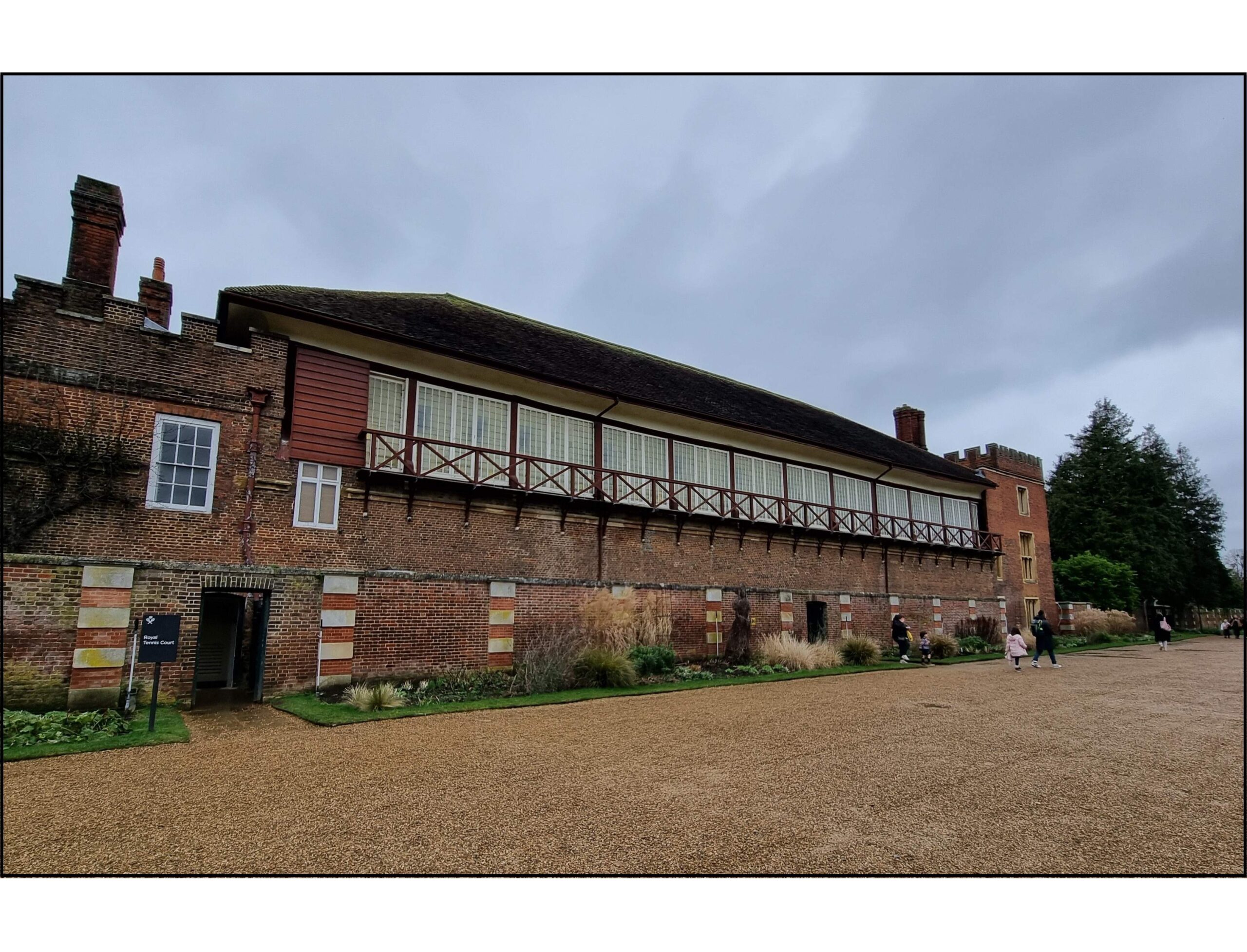
If you’re prepared to travel out to Surrey, Hampton Court Palace has a single court completed in 1625 on the remains of a 1529 court built for Cardinal Wolsey and used by a young Henry VIII.
← Hampton Court Palace tennis court exterior
→ Hampton Court Palace tennis court interior. Picture taken through the ‘winning gallery’ window. The one and two yard lines and the start of the tambour are clearly visible.
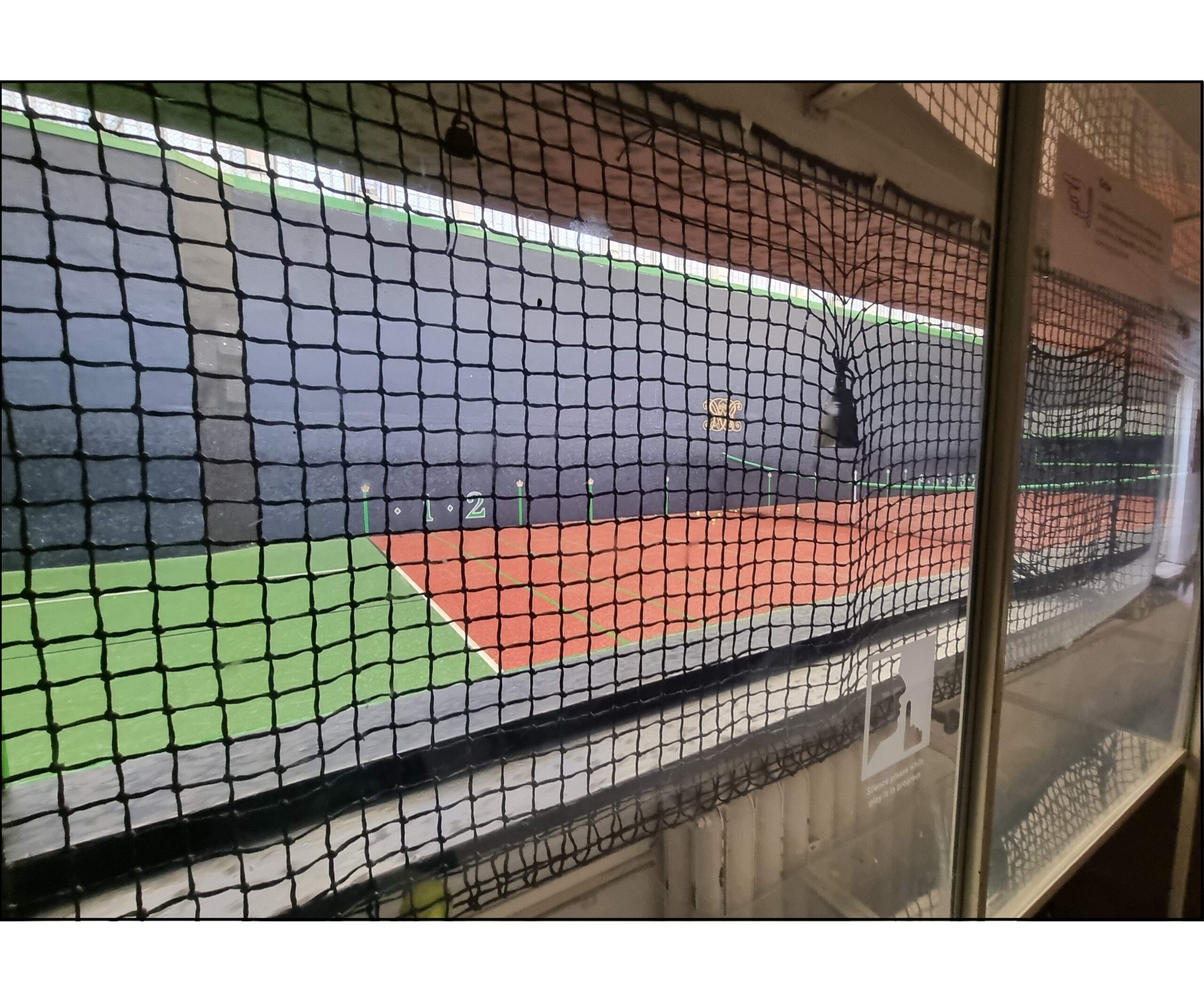
If you want to be really difficult and play the jeu quarré version, then off to Scotland with you. The only surviving jeu quarré court in the world is at Falkland Palace, in Fife. This is also the oldest tennis court in the world still in operation, built in 1541, and was probably where Mary, Queen of Scots scandalized Scottish society by played the game in breeches. It is also roofless – bad news for winter games. Or indeed summer games – this is Scotland we’re talking about.
Tenez! ….
Nearest Stations:
Credits:
Selected Bibliography: